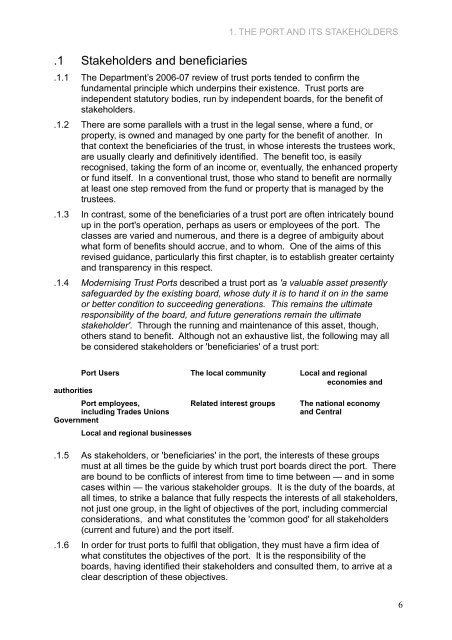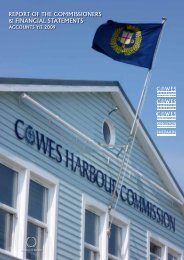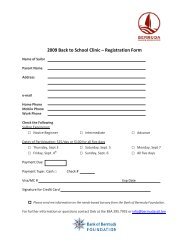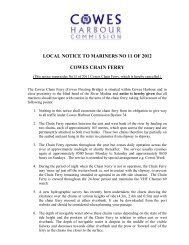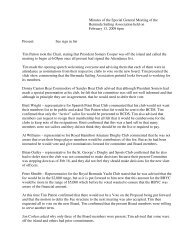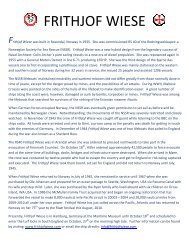Modernising Trust Ports 2nd Edition.pdf - SailingNetworks
Modernising Trust Ports 2nd Edition.pdf - SailingNetworks
Modernising Trust Ports 2nd Edition.pdf - SailingNetworks
You also want an ePaper? Increase the reach of your titles
YUMPU automatically turns print PDFs into web optimized ePapers that Google loves.
1. THE PORT AND ITS STAKEHOLDERS.1 Stakeholders and beneficiaries.1.1 The Department’s 2006-07 review of trust ports tended to confirm thefundamental principle which underpins their existence. <strong>Trust</strong> ports areindependent statutory bodies, run by independent boards, for the benefit ofstakeholders..1.2 There are some parallels with a trust in the legal sense, where a fund, orproperty, is owned and managed by one party for the benefit of another. Inthat context the beneficiaries of the trust, in whose interests the trustees work,are usually clearly and definitively identified. The benefit too, is easilyrecognised, taking the form of an income or, eventually, the enhanced propertyor fund itself. In a conventional trust, those who stand to benefit are normallyat least one step removed from the fund or property that is managed by thetrustees..1.3 In contrast, some of the beneficiaries of a trust port are often intricately boundup in the port's operation, perhaps as users or employees of the port. Theclasses are varied and numerous, and there is a degree of ambiguity aboutwhat form of benefits should accrue, and to whom. One of the aims of thisrevised guidance, particularly this first chapter, is to establish greater certaintyand transparency in this respect..1.4 <strong>Modernising</strong> <strong>Trust</strong> <strong>Ports</strong> described a trust port as 'a valuable asset presentlysafeguarded by the existing board, whose duty it is to hand it on in the sameor better condition to succeeding generations. This remains the ultimateresponsibility of the board, and future generations remain the ultimatestakeholder'. Through the running and maintenance of this asset, though,others stand to benefit. Although not an exhaustive list, the following may allbe considered stakeholders or 'beneficiaries' of a trust port:Port Users The local community Local and regionaleconomies andauthoritiesPort employees, Related interest groups The national economyincluding Trades Unionsand CentralGovernmentLocal and regional businesses.1.5 As stakeholders, or 'beneficiaries' in the port, the interests of these groupsmust at all times be the guide by which trust port boards direct the port. Thereare bound to be conflicts of interest from time to time between — and in somecases within — the various stakeholder groups. It is the duty of the boards, atall times, to strike a balance that fully respects the interests of all stakeholders,not just one group, in the light of objectives of the port, including commercialconsiderations, and what constitutes the 'common good' for all stakeholders(current and future) and the port itself..1.6 In order for trust ports to fulfil that obligation, they must have a firm idea ofwhat constitutes the objectives of the port. It is the responsibility of theboards, having identified their stakeholders and consulted them, to arrive at aclear description of these objectives.6


